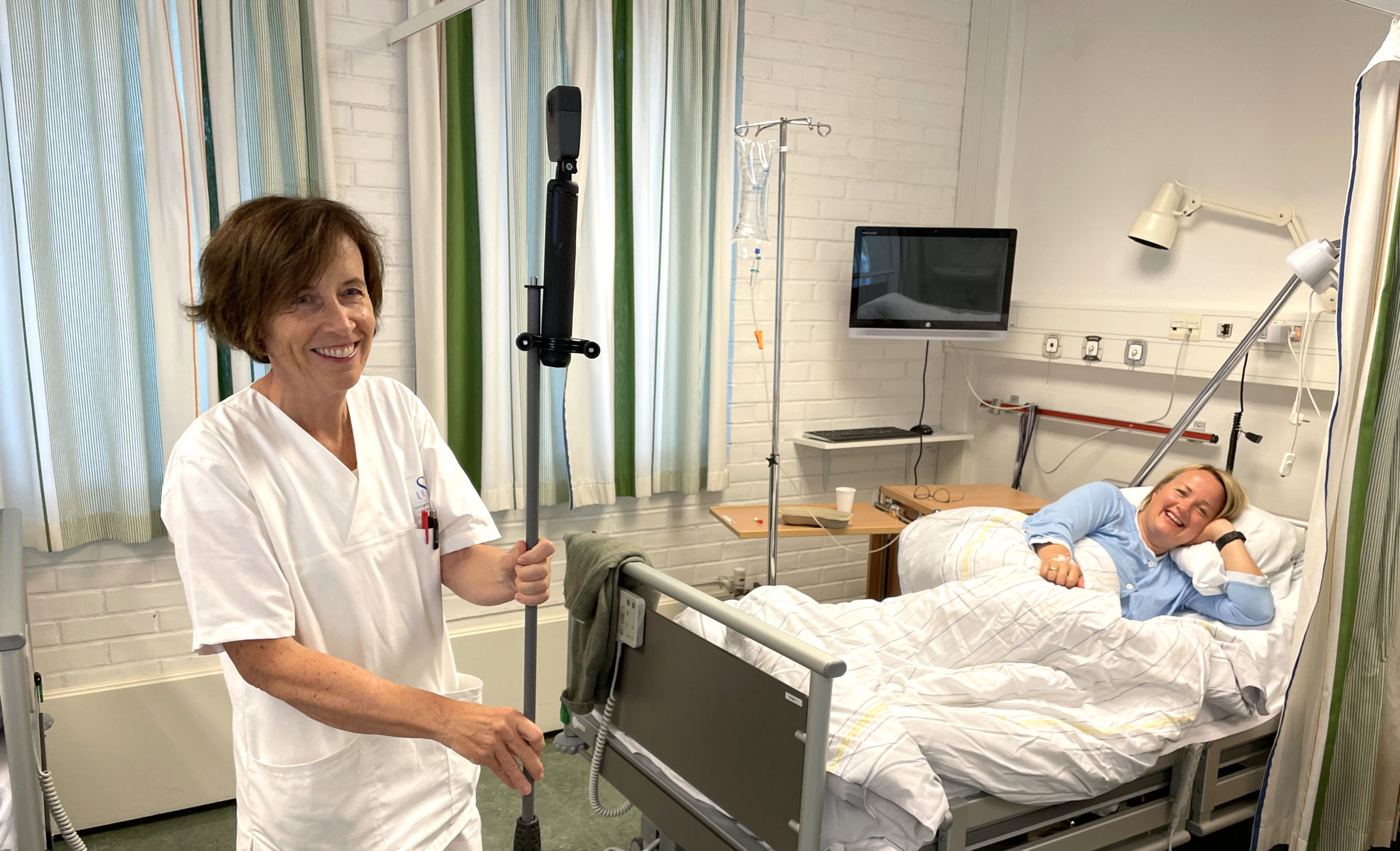The daily surgical ward round in a hospital is an important arena for interprofessional collaboration and communication between physicians, nurses, and patients. To be a skilled interprofessional team worker is an important learning outcome in the nurse education program.
That is why University of Stavanger has developed an interactive 360° training environment for nursing students. Important factors in this tool are to help the nursing students to achieve clear communication and good cooperation, as well as awareness about the process and roles in the current setting.
“We want the nursing students to learn to take an active role and “speak up” during the rounds. The nursing students and the nurses are more in contact with the patients than the physicians, so their knowledge about the patient condition is very important during rounds,” says Ingrid Tjoflåt, professor at Faculty of Health Sciences at the University of Stavanger.
The solution can also be used by wards to increase awareness about ward rounds and facilitate discussions on how to handle them.
Four cases in one ward
The interactive training solution takes the nursing students into a surgical ward with four patients. The ward is presented using a 360° image and the interaction takes place through hotspots connected to each patient. A hotspot is an effect that is clickable to the user, for instance text boxes, videos etc.
In this case, the hotspots provide the user with information about the patients’ condition, and medical progress. In addition, the user is given tasks or questions designed to encourage reflections and discussions. With one of the patients, a video of communication between the patient, the physician and the nurse is shown.
Test the training environment here.
“We want nursing students who are about to embark on their clinical practice period to use this training environment as a preparation. It could also be used by educators as part of the clinical supervision of nursing students. The solution is simple but effective. It is obvious what we want the student to learn, which is important to the learning process,” Tjoflåt explains.
Effective production of 360° training environment
Producing this training environment was done very effectively. Due to thorough planning, the recording of images and video only took two hours. It is easy to develop the solution further with new diagnoses and updated information.
Read more about the process for creating 360° learning experiences
Preparations in advance:
- A detailed script
- Two planning meetings
- Quality assurance and feedback about the script from nurses and physician on a surgical ward
- Communicating the script and plans to actors
After the recording:
- Creating and filling in material for the hotspots
Research project
The training environment will be part of a planned research project, where the goal is to evaluate how 360 video simulation cases from a hospital surgical ward round can ensure nursing students’ knowledge and confidence during the nursing training. Moreover, to explore how nurse educators at the Bachelor program in Nursing at the University of Stavanger (UiS) perceive 360 video simulations as a learning tool.



